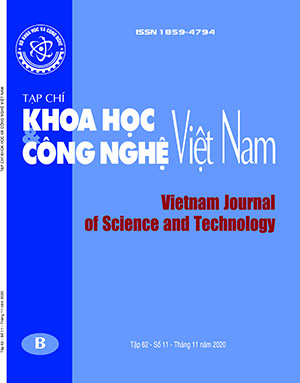Prediction of consolidation coefficient of soft soil using machine learning in some areas of North coast Vietnam.
Abstract
The main object of this study is to accurately predict the consolidation coefficient (Cv) of soft soil in some areas of Quang Ninh, Hai Phong, and Thai Binh provinces using 3 machine learning methods: Support Vector Regression (SVR), Artificial Neural Network Multilayer Perceptron (ANN MLP), and Ridge Regression (RR). These methods are built on the Python programming language and the Scikit-learn library. The data for this study includes 133 soil samples that were collected from the construction site in North coast Vietnam. These samples at various depth (m) were analysed in the laboratory for the determination of clay content (%), silt content (%), liquid limit (%), plastic limit (%), plasticity index (%), liquidity index, moisture content (%), wet density (g/cm3), dry density (g/cm3), specific gravity (g/cm3), porosity (%), degree of saturation (%), and void ratio. In addition, the authors have analysed the correlation of 15 parameters in predicting Cv. After removing parameters which have a weak correlation with Cv, there were 6 parameters that were strongly correlated with Cv including liquid limit, moisture content, wet density, dry density, porosity, and void ratio. For prediction Cv, the authors built a model with 70% of learning data and 30% of test data. The performance of the models was validated using Mean Absolute Error (MAE), Root Mean Square Error (RMSE) Correlation coefficient (R), and Coefficient of determination (R2). Results of the models’ study showed that the performance of the models using different methods is much different where R2-value varies from 0.7899 to 0.8737. The present study suggested that the ANN MLP model has the highest predictive capability in 3 models with the corresponding results of the coefficients: R2=0.8737, MAE=0.2196, RMSE=0.2678, and R=0.9367.

